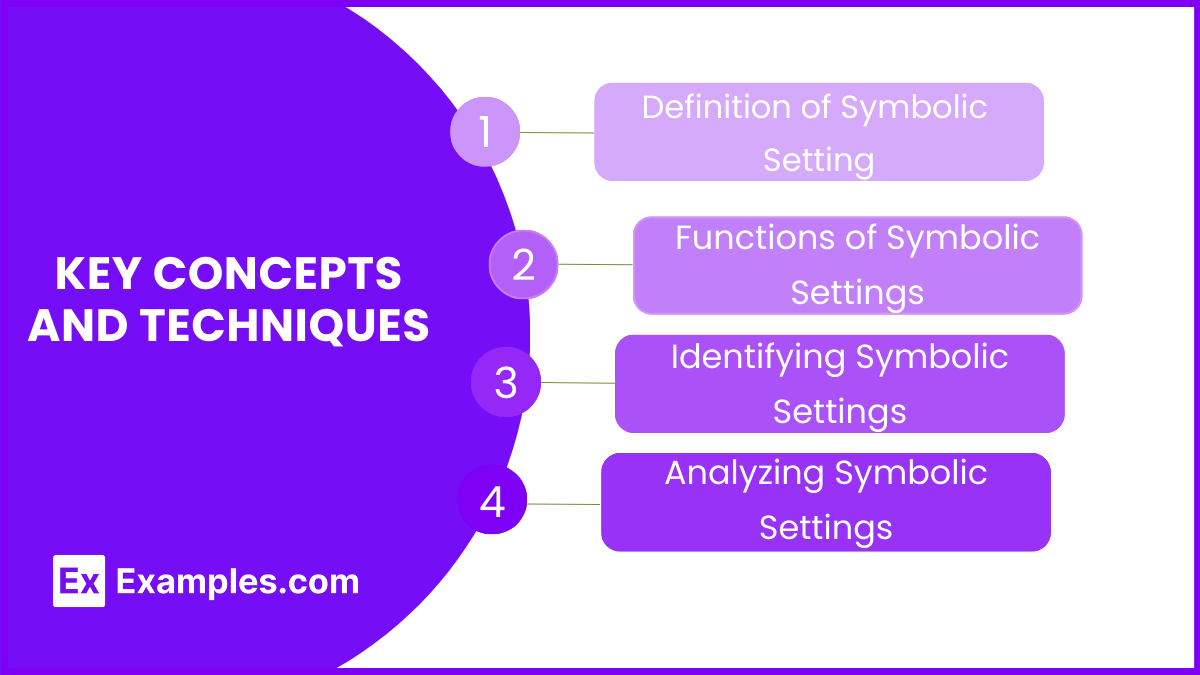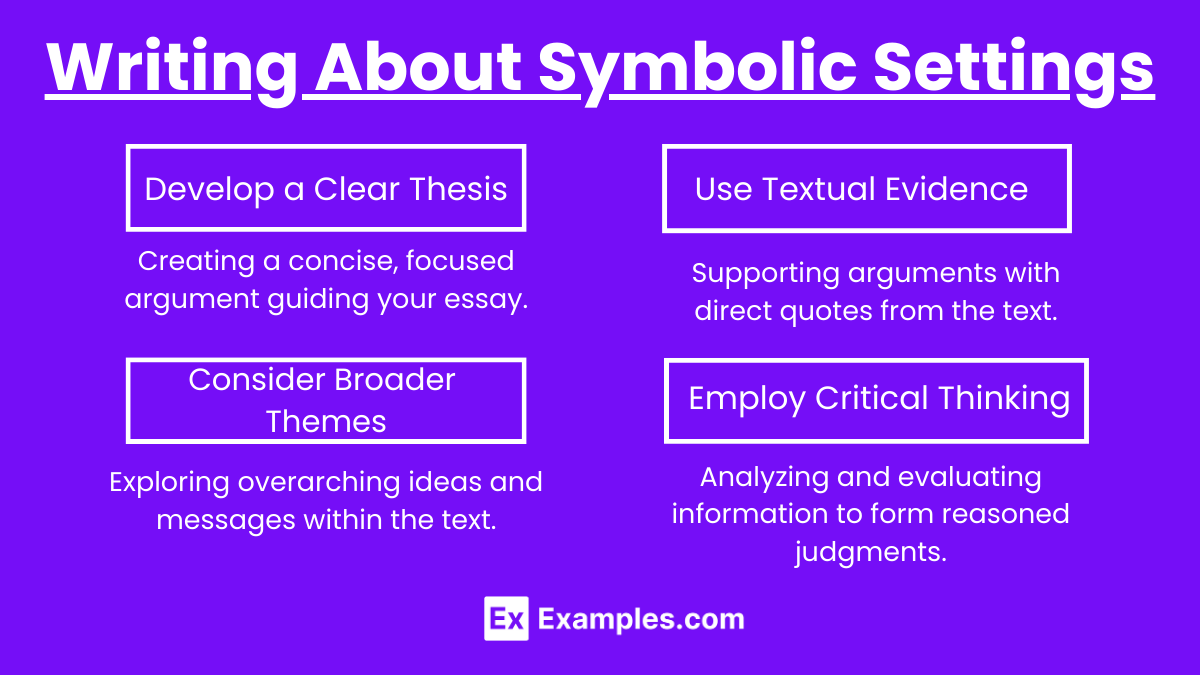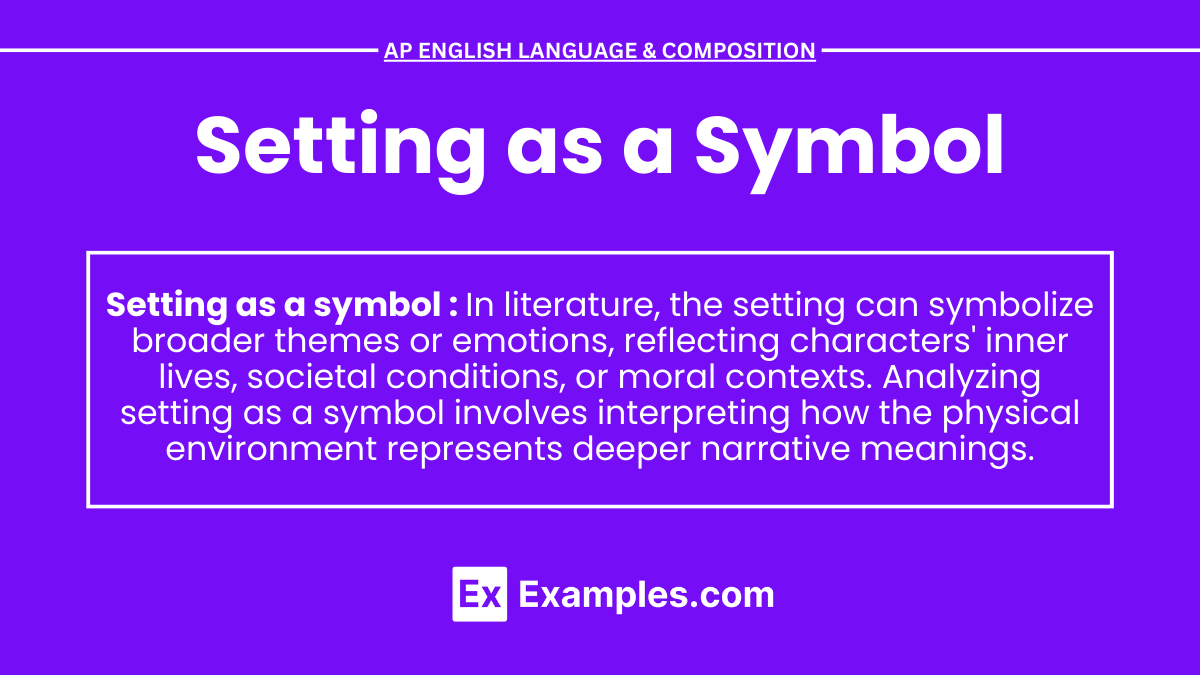In AP English Language and Composition, understanding setting as a symbol is crucial for analyzing literary works. Crafting rhetorical sentences and cumulative sentences enhances your ability to discuss how settings represent broader concepts in argumentative speech and argumentative writing. By exploring symbolic settings, you can develop insightful arguments and deepen your literary analysis.
Learning Objectives
The learning objectives for analyzing setting as a symbol include mastering the use of cumulative sentences to build detailed analyses, crafting explanatory essays and expository essays to elucidate symbolic meanings, constructing rhetorical sentences for persuasive arguments, formulating a final thesis statement that encapsulates your analysis, and applying critical thinking to explore the significance and impact of settings on the narrative and themes.
Key Concepts and Techniques

- Definition of Symbolic Setting
- A setting that represents broader concepts or themes beyond its literal meaning.
- Can reflect characters’ internal states, societal conditions, or universal themes.
- Functions of Symbolic Settings
- Reinforcing Themes: Emphasizes the central themes of the narrative.
- Character Reflection: Mirrors the internal states or transformations of characters.
- Foreshadowing: Hints at future events or outcomes in the story.
- Mood and Atmosphere: Establishes the emotional tone and influences reader perception.
- Identifying Symbolic Settings
- Look for descriptions with significant detail or emphasis.
- Identify recurring settings that appear at critical moments in the narrative.
- Pay attention to settings that evoke strong imagery or emotions.
- Analyzing Symbolic Settings
- Contextual Analysis: Consider the historical, cultural, and social context of the setting.
- Textual Evidence: Support your analysis with quotations and detailed descriptions from the text.
- Comparative Analysis: Compare the symbolic setting to other elements in the text, such as characters or events.
- Thematic Connection: Relate the setting to the broader themes and messages of the work.
Writing About Symbolic Settings

- Develop a Clear Thesis
- Formulate a thesis statement that encapsulates your argument about the symbolic significance of the setting.
- Ensure it addresses the relationship between the setting and the broader themes or characters.
- Use Textual Evidence
- Support your analysis with specific quotations and detailed descriptions from the text.
- Explain how these passages illustrate the symbolic meaning of the setting.
- Consider Broader Themes
- Relate the symbolic setting to the overarching themes and messages of the work.
- Analyze how the setting contributes to the overall impact of the story.
- Employ Critical Thinking
- Engage in critical thinking to explore the deeper significance of the setting.
- Consider multiple perspectives and interpretations.
Practical Examples
- Wuthering Heights in “Wuthering Heights” by Emily Brontë
- Symbolism: Represents the wild, untamed passion of the characters.
- Analysis: The stormy, isolated moors reflect the tumultuous relationship between Heathcliff and Catherine, emphasizing themes of love and revenge.
- The Green Light in “The Great Gatsby” by F. Scott Fitzgerald
- Symbolism: Represents Gatsby’s unattainable dreams and the illusion of the American Dream.
- Analysis: The setting of East Egg and West Egg, with the green light in between, highlights the social divide and the elusiveness of Gatsby’s desires.
- Maycomb, Alabama in “To Kill a Mockingbird” by Harper Lee
- Symbolism: Represents the racial and social injustices of the American South.
- Analysis: The sleepy town setting underscores the entrenched prejudices and moral challenges faced by the characters, particularly Atticus Finch and Scout.
- The Island in “Lord of the Flies” by William Golding
- Symbolism: Represents the isolation and the breakdown of civilization.
- Analysis: The pristine island setting initially symbolizes paradise but gradually becomes a symbol of chaos and savagery as the boys’ society collapses.


